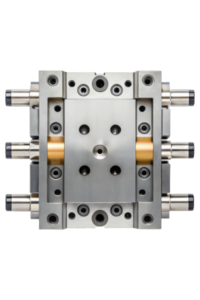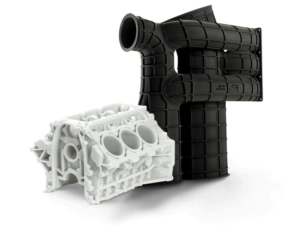Choosing the right injection molding tooling, which may also be called the mold, is a critical step in the process of manufacturing quality plastic parts. The tooling can be a significant investment, so evaluating your project for purpose, complexity, lifetime, and part volume will ensure that you make an appropriate and economical choice.
Considerations for Injection Molding Tooling
Determining the type of tooling your project requires considering the project needs. Rapid injection molding tooling that will only be used for a small number of parts doesn’t need to be as robust as production part tooling that may be required to produce tens of thousands of parts. Each type of tooling has its own parameters and restrictions that may or may not fit with your part design and needs. Some of the aspects to consider include:
- Timeline – How quickly do you need to have parts? Rapid molded parts can be made quickly, but they come with a much shorter tool life, so this must be carefully weighed when deciding.
- Complexity – Does your part have undercuts or features that prevent a straight pull or require a side action (i.e., lifter or slider)? Does your part require overmolding?
- Volumes – The number of parts you expect to produce will impact the type of tooling you need.
- Scalability – Do you plan to scale from a lower volume to a higher volume during the product’s lifetime? If so, you will want to consider this when choosing your tooling.
Investing time in planning will ensure a better long-term outcome and avoid unnecessary costs. Your injection molder should provide guidance to ensure your part can be molded to meet your specifications and expectations. They will ask you several questions to ensure they understand your objectives, determine the moldability of the part, and confirm what type of mold is best for your project.
Types of Injection Molding Tooling
Standard molds are defined by the Plastics Industry Association (PIA) based on the number of cycles they are expected to run. In some regards, the class indicates the quality of the mold. However, other factors can impact the lifespan of a mold, including design, materials, operating environment, processes, and proper maintenance. The mold classifications are as follows:
- Class 101 – Maximum lifespan can exceed one million cycles
- Class 102 – Maximum lifespan of up to one million cycles
- Class 103 – Maximum lifespan of up to 500,000 cycles
- Class 104 – Maximum lifespan of up to 100,000 cycles
- Class 105 – Maximum lifespan of up to 500 cycles
This is a simple comparison as mold classification goes beyond maximum cycles, and each class has unique parameters. Working closely with your molder will ensure you are investing in a mold that will meet your expectations for cost and quality.
Quickparts Injection Molding Tooling
With in-house production of molds, we can accelerate your product development timeline faster than industry averages. We work with customers who prototyping, bridge tooling, or low-volume production tooling. We offer four different molds to meet your specific requirements based on your product timeline. Our team of engineers can support your project from prototype through production.
Tooling is determined by the product being manufactured:
- Quick molded parts – These parts are ideal for the first prototype parts that are made in actual production-grade materials. This option provides the tooling and parts in just 2 to 3 days. However, because of this, there are limitations to the design and geometry of the part. The size cannot exceed 80mm x 80mm x 50mm (3in x 3in x 2in). Additionally, the part cannot require sliders or lifters, the parting line must be straight, and gating is limited to the edge, tab, or center. The tooling is made from aluminum, and the maximum number of parts is 250.
- Prototype tooling and parts – This is ideal for design validation; testing form, fit, and function of parts; and material trials. This system uses a proprietary insert and base system. The customer’s investment is in the insert and not the mold base, reducing costs. The single-cavity prototype molds are made from high-grade QC-10 aluminum and are used when lifetime volumes are below 2,500. Parts can be made in production material, and unlike rapid molding, automatic or manual sliders can be used, but lifters cannot.
- Low-volume production manufacturing – Low-volume injection molding bridges the gap from prototype to production, or can be utilized for a complete production process. These molds and inserts are constructed of pre‐hardened steel to support low-volume production with a tool life of 50,000 or more shots. Inserts and molds can be made from aluminum or pre‐hardened steel and can be single or multi-cavity. The mold insert construction is intended for low-volume production of up to 10,000 shots; although the tool itself will make production parts to 100% production specs. The complete mold, or mold base and inserts, is owned by the customer. This is the least restrictive as far as design but has the longest lead time of 3 -8 weeks because of the complexity of the mold.
Start a Project With Us
To begin a project with Quickparts, request a quote through our online portal, and we will respond within one business day. We will perform a design for manufacturability analysis, and in some cases, mold flow analysis, and let you know of any areas that may cause problems for manufacturing the part. Once you place your order, we will design and build your mold and schedule your part run. Get your parts faster with Quickparts!


